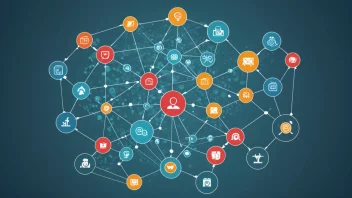What are Emergency Medical Services (EMS)?
Emergency Medical Services (EMS) are crucial healthcare systems designed to provide immediate medical assistance to individuals in urgent need. This includes various services such as ambulances, paramedics, and emergency medical technicians (EMTs) who work together to deliver care at the scene of an emergency and during transport to medical facilities.
How is technology improving response times in EMS?
Technology plays a significant role in enhancing response times for EMS. Advanced GPS systems and real-time traffic data allow dispatchers to identify the quickest routes for ambulances. Additionally, mobile applications enable paramedics to receive alerts and updates on emergencies directly on their devices, ensuring they are better prepared when they arrive at the scene.
What role do telemedicine and remote monitoring play in EMS?
Telemedicine has become an invaluable tool in EMS, allowing paramedics to consult with physicians in real-time while en route to a hospital. Remote monitoring devices can transmit vital signs from patients to medical professionals, enabling better decision-making and treatment even before the patient arrives at the hospital.
How are drones being utilized in emergency medical services?
Drones are emerging as a transformative technology in EMS. They can deliver essential medical supplies, such as defibrillators or medications, to remote or hard-to-reach locations much faster than traditional ground transport. This capability can be life-saving in critical situations where every second counts.
What advancements have been made in mobile health (mHealth) technologies?
Mobile health technologies, or mHealth, have significantly impacted EMS by providing apps that allow for better patient assessment and data collection. Paramedics can use these tools to record patient information, access medical histories, and communicate with hospitals, streamlining the care process and improving patient outcomes.
How does data analytics enhance emergency medical services?
Data analytics helps EMS organizations analyze patterns in emergency calls, response times, and patient outcomes. By utilizing this data, EMS providers can identify areas for improvement, optimize resource allocation, and develop better training programs for their staff, ultimately leading to more effective emergency care.
What are the challenges of integrating technology into EMS?
While technology offers numerous benefits, integrating it into EMS comes with challenges. These include the high costs of new technologies, the need for training personnel, and ensuring that all systems work seamlessly together. Additionally, there are concerns about data privacy and security, especially when handling sensitive patient information.
How can the public support advancements in EMS technology?
The public can support advancements in EMS technology by advocating for funding and resources for local EMS agencies. Community awareness programs can also educate citizens about the importance of technology in emergency care and encourage them to participate in local initiatives aimed at improving EMS services.
Conclusion: Technology is revolutionizing Emergency Medical Services by improving response times, enhancing patient care, and providing innovative solutions to challenges faced by EMS providers. As advancements continue, it is crucial for communities to support these developments to ensure that emergency medical services remain effective and responsive to the needs of their populations.






